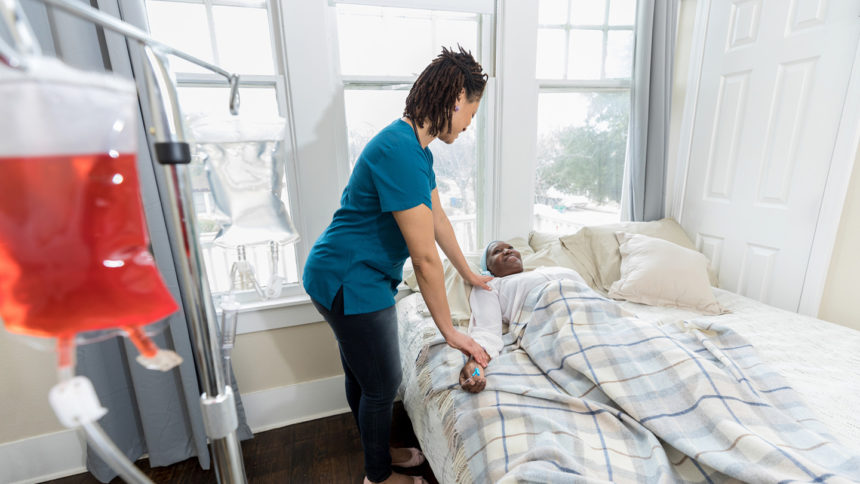
Nursing homes and residential care facilities gained another 11,000 jobs in October, a quick rebound after a fresh slump in September.
The data reported Friday by the Bureau of Labor Statistics blunts the impact on skilled nursing, but a detailed breakdown for nursing homes shows just more than 4,000 jobs added in October.
That’s still up from the 1,367 skilled nursing jobs added in September, which was disappointing coming off of strong estimates in August. The recovery in nursing homes has begun to look like a roller-coaster ride, with not-so-fun valleys between potentially promising peaks.
In September, healthcare as a whole rose by 60,000 jobs to return to its February 2020
level. But those gains were largely in the ambulatory health care services and hospitals segments.
On Friday, Labor Secretary Marty Walsh called out the new healthcare job gains, noting that so far in 2022, healthcare employment has increased by an average of 47,000 positions per month, compared with 9,000 per month in 2021.
But the recovery picture remains scariest in nursing homes.
What’s been happening in there still hews closely to a projection earlier this year that facilities may take until 2026 to fully recover from pandemic-era losses.
“These recent job gains are encouraging. However, at this pace, it will take years for our sector to return to pre-pandemic workforce levels. Meanwhile, seniors will continue to feel the impact by having to wait longer in hospitals or having to move farther from loved ones because facilities don’t have the staff to care for them,” a spokeswoman for the American Health Care Association said Friday.
Stubborn shortages
While some providers have begun to report an anecdotal easing of the labor crunch, vacancies are intransigent in other areas. That’s often despite attempts to create local wage floors or incentivize higher direct care pay through legislative efforts.
The Massachusetts Senior Care Association reported last week that its most recent quarterly survey showed some 6,900 registered nurse, licensed practical nurse and certified nurse assistant positions were open at nursing homes. That’s 22% of all such positions statewide for the third straight quarter.
The vacancies are so staggering that not even the full national growth for October would alleviate the crunch or signify enough steps toward recovery.
“Providers are doing everything they can to rebuild our workforce, but they can’t do it alone,” AHCA noted Friday, resuming its call for federal action.
“It’s time for policymakers to step up and invest in our frontline heroes in order to protect access to care for seniors. We need immediate assistance, and we also need long-term policies that will help recruit and retain hundreds of thousands of long term caregivers.”




